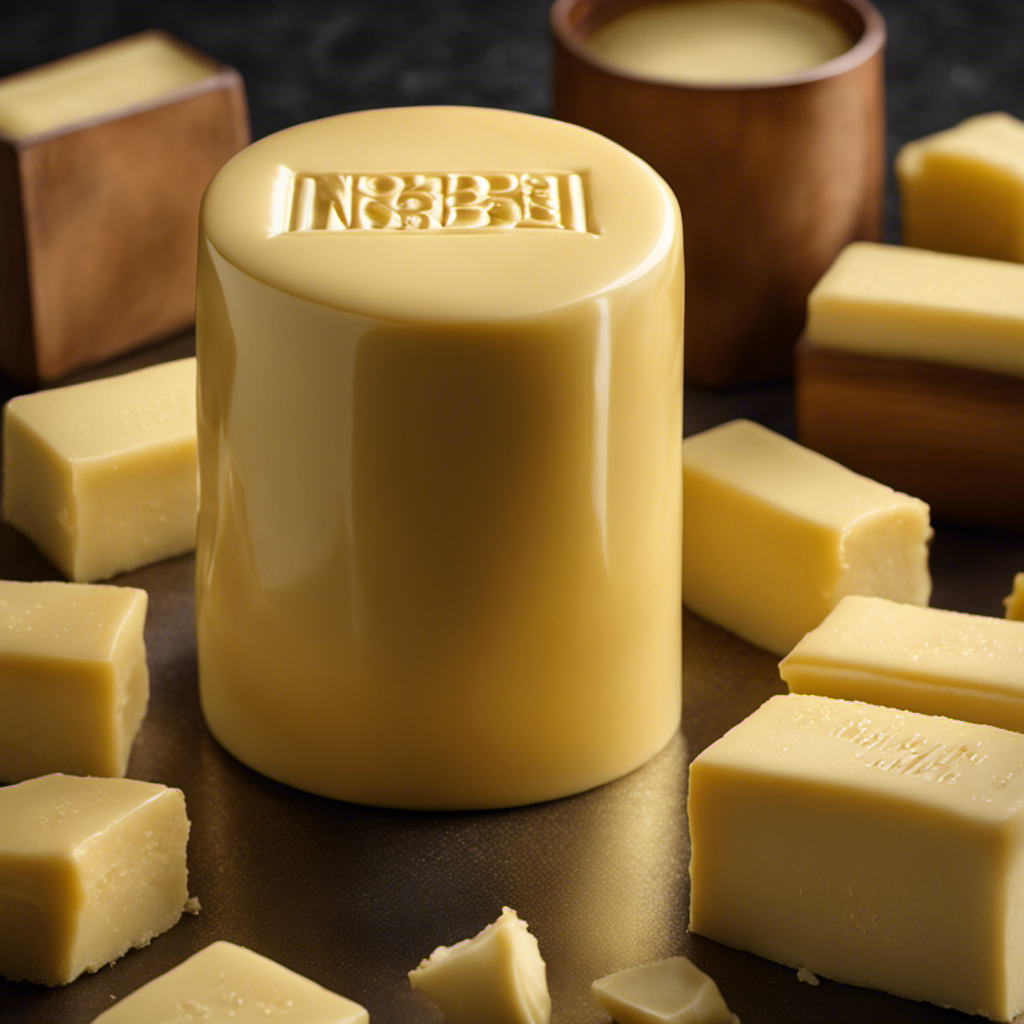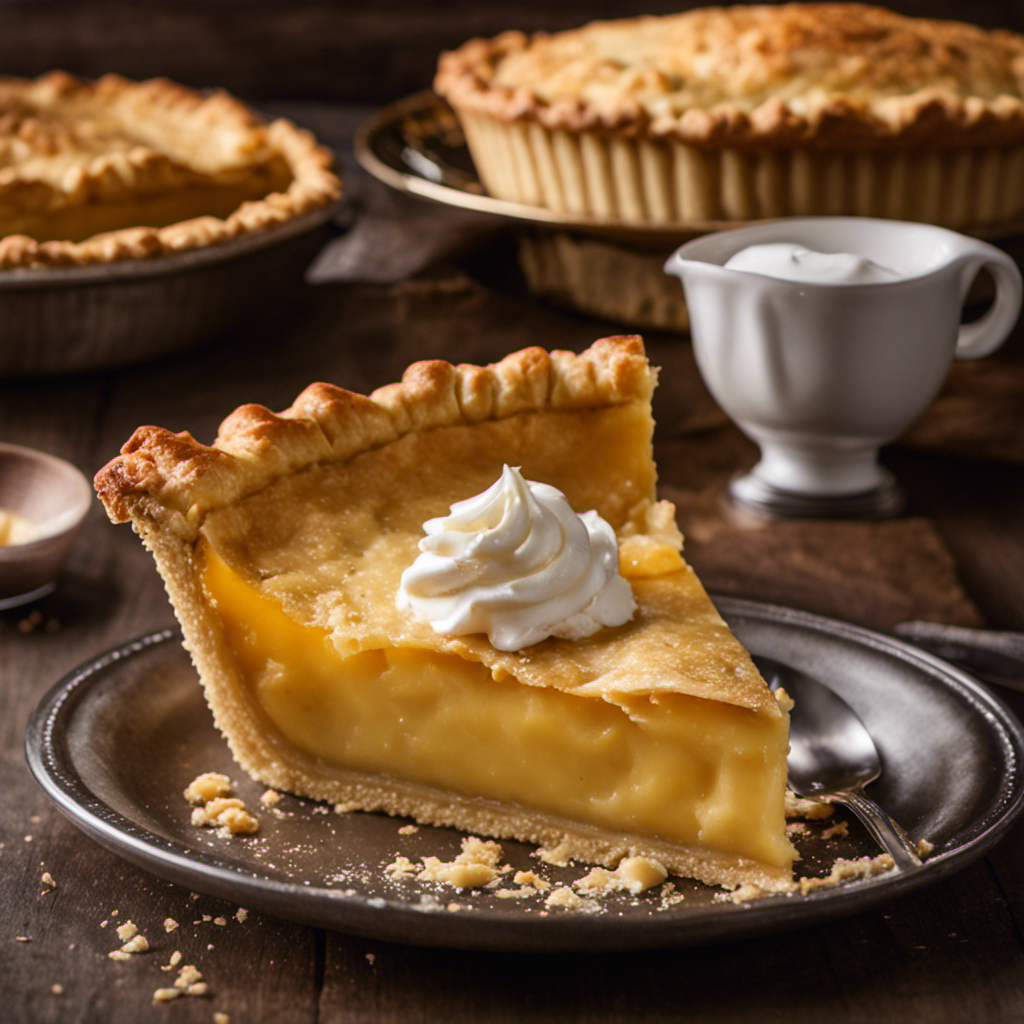As a man sporting a beard, I have come to understand that keeping a well-groomed beard is a skillful craft. It requires attention, care, and the right tools.
One such tool that has become essential in my beard care routine is beard butter. This magical concoction not only softens and nourishes my facial hair, but also helps to keep it looking sharp and stylish.
In this article, I will guide you through the process of applying beard butter, step-by-step, so you can achieve the suave and sophisticated look you desire.
Key Takeaways
- Beard butter achieves a softer and more manageable beard.
- Proper preparation techniques set the stage for successful application.
- Choosing the right beard butter for your needs is important.
- Techniques for properly distributing beard butter ensure an even and nourished beard.
Benefits of Using Beard Butter
Using beard butter will help you achieve a softer and more manageable beard. The benefits of using beard butter are numerous.
Firstly, it deeply moisturizes your facial hair and the skin underneath, preventing dryness and itchiness. This is particularly important during the colder months when the skin tends to become drier.
Secondly, beard butter nourishes and strengthens the hair follicles, promoting healthier and thicker growth. It also helps to tame frizz and flyaways, making your beard look neater and more polished.
Furthermore, beard butter often contains natural ingredients such as shea butter and essential oils, which provide additional benefits like promoting a healthy beard growth and soothing the skin.
To apply beard butter correctly, warm a small amount between your palms and massage it into your beard, making sure to reach the roots.
Now, let’s move on to preparing your beard for application by following a few simple steps.
Preparing Your Beard for Application
Before starting, make sure your beard is clean and dry. Proper preparation techniques are essential for a successful beard care routine. To ensure your beard is ready for the application of beard butter, follow these steps:
-
Wash your beard: Use a mild beard shampoo to cleanse your beard thoroughly. This will remove any dirt, debris, or excess oils that could hinder the absorption of the beard butter.
-
Dry your beard: Gently pat your beard dry with a towel. Avoid rubbing vigorously, as this can cause frizz and damage the hair follicles.
-
Comb your beard: Use a wide-toothed comb or a beard brush to detangle your beard. This will help distribute the beard butter evenly and prevent any clumps or uneven application.
By following these preparation techniques, you are setting the stage for a successful beard butter application.
Now, let’s move on to choosing the right beard butter for your needs.
Choosing the Right Beard Butter for Your Needs
To find the perfect beard butter for you, start by considering your specific grooming needs and preferences. Here are three important factors to keep in mind:
-
Scent: Choosing the right scent for your beard butter is crucial. Whether you prefer a refreshing citrus aroma or a subtle woodsy fragrance, there are plenty of options to suit your personal taste. Experiment with different scents to find the one that complements your style and personality.
-
Ingredients: Look for beard butters made with natural and nourishing ingredients like shea butter, jojoba oil, and argan oil. These ingredients will not only moisturize and soften your beard but also promote healthy hair growth.
-
Storage: Properly storing your beard butter is essential to maintain its quality. Keep it in a cool, dry place away from direct sunlight. Avoid exposing it to extreme temperatures, as this can alter its consistency and effectiveness.
Step-by-Step Guide to Applying Beard Butter
Start by warming a small amount of the product in your palms before rubbing it into your beard for optimal coverage and absorption.
Choosing the right product for your beard is crucial in maintaining its health and appearance.
When applying beard butter, there are a few tips to ensure an even distribution.
First, make sure your beard is clean and dry. This will help the product penetrate the hair follicles more effectively.
Next, start by applying the butter to the areas that need the most attention, such as the chin and mustache.
Use your fingertips to massage the product into your beard, working from the roots to the ends.
Finally, use a beard comb or brush to evenly distribute the butter and style your beard as desired.
How Much Beard Butter to Use
When determining how much beard butter to use, it’s important to consider the length and thickness of your facial hair. Here are some guidelines to help you determine the right amount:
-
Short and thin beard: Start with a small amount, about the size of a pea. You can always add more if needed.
-
Medium length and average thickness: Use a dime-sized amount to ensure even coverage and nourishment.
-
Long and thick beard: You may need a quarter-sized amount or more to thoroughly moisturize and condition your beard.
Remember, these are just general guidelines, and you can adjust the amount based on your personal preference and the specific brand of beard butter you’re using.
Speaking of brands, some of the best beard butter brands available include Honest Amish, Beard Bolt XL, and Wild Willies.
Now that you know how much beard butter to use, let’s move on to the next section where we’ll discuss techniques for properly distributing it throughout your beard.
Techniques for Properly Distributing Beard Butter
When it comes to distributing beard butter, there are two main techniques to consider: using your fingers or a comb. Both methods have their advantages and it ultimately comes down to personal preference.
If you prefer a more controlled and precise application, using your fingers allows you to target specific areas and work the butter into your beard.
On the other hand, using a comb can help to evenly distribute the butter throughout your beard, ensuring that every strand is coated.
The amount of beard butter to apply will depend on the length and thickness of your beard. Start with a small amount and gradually increase if needed, making sure to evenly distribute it from root to tip.
This will help to keep your beard moisturized, nourished, and looking its best.
Finger Vs. Comb
Using your fingers allows for better control and distribution of the beard butter compared to using a comb. When it comes to applying beard butter, the method you choose can make a significant difference in the overall outcome. Here are three reasons why using your fingers is the superior choice:
-
Precision: Your fingers give you the ability to target specific areas of your beard, ensuring that every strand receives an adequate amount of butter. This level of precision is hard to achieve with a comb, which may not reach all the nooks and crannies.
-
Even Distribution: By using your fingers, you can evenly distribute the beard butter throughout your facial hair. This ensures that every part of your beard receives the nourishing benefits of the butter, resulting in a healthier, more lustrous beard.
-
Massage and Styling: Your fingers allow you to massage the butter into your beard, stimulating blood flow and promoting healthy growth. Additionally, you can use your fingers to shape and style your beard, giving it the desired look and texture.
Amount to Apply
To achieve optimal results, it’s crucial to find the right amount of beard product for your facial hair.
When it comes to beard care and grooming techniques, using the right amount of beard butter is essential. Applying too little may not provide enough nourishment, while applying too much can leave your beard feeling greasy and weighed down.
The key is to start with a small amount, about the size of a dime, and then gradually increase if needed. Rub the butter between your palms until it melts, then distribute it evenly throughout your beard, making sure to reach the roots.
Use your fingers or a comb to style your beard as desired. Remember, finding the perfect amount may require some trial and error, but with time and practice, you’ll discover what works best for your facial hair.
Massage Techniques for Better Absorption
For better absorption, gently massage the beard butter into your facial hair using small, circular motions. This massage technique helps to evenly distribute the product and allow it to penetrate deeply into the hair and skin.
Here are some tips to enhance the effectiveness of your beard butter application:
-
Start from the roots: Begin massaging the butter into your beard starting from the roots. This ensures that the product reaches the base of the hair follicles and nourishes the hair from within.
-
Use your fingertips: Use the pads of your fingers to massage the butter into your beard. This allows for better control and ensures that the product is evenly distributed.
-
Don’t forget the skin: While massaging the beard butter, make sure to also massage it into the skin beneath your facial hair. This helps to moisturize and nourish the skin, promoting healthy beard growth.
Product recommendations: When it comes to beard butter, I highly recommend trying out brands like Honest Amish, Beardbrand, and Zeus. These brands offer high-quality products that are specifically formulated to nourish and condition your beard, leaving it soft, manageable, and healthy.
Styling Your Beard After Applying Beard Butter
When it comes to styling your beard after applying beard butter, there are a few key points to consider.
First, you want to ensure that your beard has the right shape and definition. This can be achieved by using a comb or brush to shape the beard in the desired direction.
Additionally, beard butter provides a long-lasting hold, keeping your beard in place throughout the day.
Shape and Definition
Using beard butter regularly can help achieve a well-defined and shaped beard. Beard grooming is an essential part of maintaining a healthy and attractive beard. By incorporating beard care techniques into your routine, you can ensure that your beard is always looking its best.
Here are three key tips for shaping and defining your beard:
-
Start with clean, dry hair: Before applying beard butter, make sure your beard is clean and dry. This will allow the product to penetrate the hair follicles more effectively, resulting in a more defined look.
-
Use the right amount of product: A little goes a long way when it comes to beard butter. Start with a small amount and gradually add more if needed. This will prevent your beard from looking greasy or weighed down.
-
Comb or brush in the desired shape: Once you have applied the beard butter, use a comb or brush to shape and define your beard. Start from the roots and work your way down to the ends, ensuring that the product is evenly distributed.
Long-Lasting Hold
To achieve a long-lasting hold, it is crucial to evenly distribute the product throughout your beard. This step ensures that every hair strand is coated with the nourishing ingredients in the beard butter.
Nourishing ingredients like shea butter, argan oil, and jojoba oil penetrate deep into the hair follicles, providing hydration and strengthening the hair from within. This not only keeps your beard soft and manageable but also helps to prevent breakage and split ends.
As you massage the beard butter into your beard, take your time to work the product in. Make sure that every hair is coated to create a long-lasting hold. This will keep your beard looking its best throughout the day.
Natural, Polished Look
For a natural, polished look, simply work the nourishing ingredients into your beard, ensuring that every strand is coated evenly. Beard butter is a versatile grooming product that not only conditions your facial hair but also helps you achieve the desired style effortlessly.
Here are three steps to style your beard using beard butter:
-
Start with a clean, dry beard: Before applying beard butter, make sure your beard is clean and dry. This allows the butter to penetrate the hair follicles effectively.
-
Take a small amount of beard butter: Scoop out a small amount of beard butter onto your fingertips. Remember, a little goes a long way, so start with a small quantity and add more if needed.
-
Work it into your beard: Rub the butter between your palms to warm it up, then massage it into your beard, starting from the roots and working your way down to the tips. Use your fingers or a beard brush to distribute the butter evenly.
By following these steps, you can achieve a natural, polished look with beard butter.
Now, let’s move on to some tips for maintaining a healthy beard with beard butter.
Tips for Maintaining a Healthy Beard With Beard Butter
Maintaining a healthy beard is easier when you regularly apply beard butter. Not only does beard butter help to moisturize and nourish your facial hair, but it also keeps your skin underneath healthy and hydrated. As someone who is passionate about beard grooming, I have discovered some tips and tricks that have made a significant difference in the appearance and health of my beard. Here are a few beard care tips that I highly recommend:
| Beard Care Tips |
|---|
| 1. Wash your beard regularly with a beard-specific shampoo. |
| 2. Apply beard oil before applying beard butter for added moisture. |
| 3. Use a beard brush or comb to distribute the butter evenly. |
| 4. Trim your beard regularly to maintain its shape and prevent split ends. |
Frequently Asked Questions
Can Beard Butter Be Used on a Mustache as Well?
Yes, beard butter can be used on a mustache as well. It provides many benefits for mustache grooming, such as moisturizing the hair, reducing frizz, and adding shine. Applying it is simple and effective.
How Often Should I Apply Beard Butter?
I apply beard butter daily to keep my beard moisturized and promote healthy growth. It takes a few weeks of consistent use to see noticeable results. So, if you’re wondering how often to apply, daily is the way to go.
Can Beard Butter Help With Beard Dandruff?
Yes, beard butter can help with beard dandruff. The ingredients in beard butter, such as nourishing oils and butters, moisturize the skin underneath, reducing dryness and flakiness. Regular use of beard butter has numerous benefits for a healthy, dandruff-free beard.
Is Beard Butter Suitable for All Types of Hair Textures?
Beard butter is suitable for all hair textures. It helps moisturize and nourish the beard, reducing dryness and frizz. Some of the best beard butter brands include Honest Amish and Beardbrand.
Can I Use Beard Butter if I Have Sensitive Skin?
Yes, you can use beard butter even if you have sensitive skin. It has numerous benefits for sensitive skin, such as moisturizing and soothing properties. It helps to reduce irritation and keeps your beard and skin healthy.
Conclusion
In conclusion, applying beard butter is crucial for maintaining a healthy and well-groomed beard. By using the right amount and distributing it properly, you can experience the benefits of beard butter such as softness, shine, and hydration.
Don’t forget to choose the right beard butter for your specific needs. Take the time to massage it into your beard for better absorption. These techniques will allow you to style your beard with ease and keep it looking its best.
So, go ahead and give your beard the love it deserves with beard butter!










